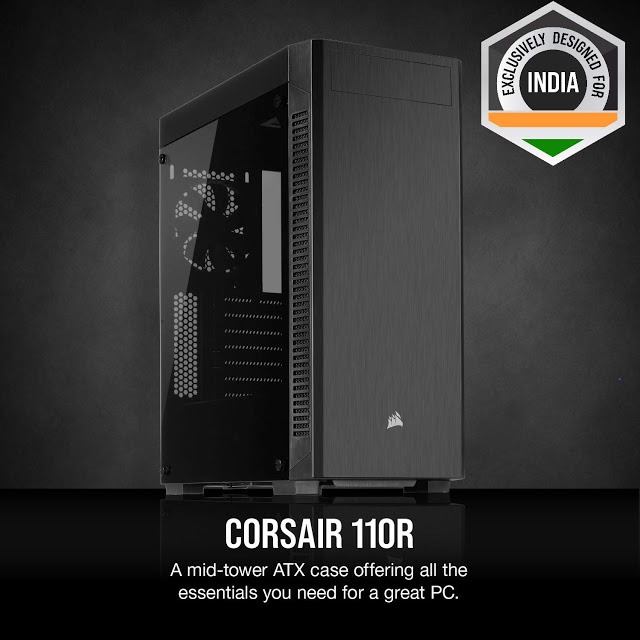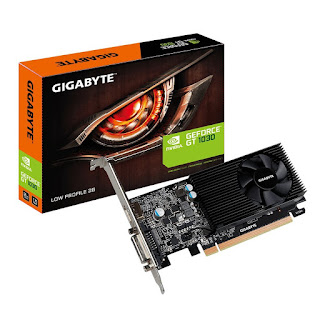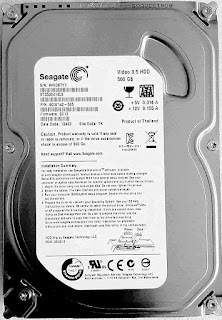Best Gaming PC Build Under Rs.30000 In 2021 [Intel Based]
 |
| Gaming PC Build Under Rs. 30000 |
Building a Gaming PC is not that hard, but sometimes it can get tricky. That's why some people decide to go with Prebuilt PCs. But going towards a Prebuilt PC is not worth it as they offer very little performance as compared to the performance you can get from a custom PC build at the same price.
But sometimes it can be difficult to decide between what PC parts to choose and what to not especially if you have a tight budget. To help you, we've catered a list of the Best Components you need to build a Gaming PC Build Under Rs. 30000.
This 30k Gaming PC Build build is enough to play most of the AAA title games on 1080p 60 FPS, but first, take a look at the summary of Components we'll be using for this PC Build.
Related: Best Power Supplies For Nvidia RTX 3070
[Note: The Parts Used In this pc build are up-to-date and latest.]
Summary of components for Best Gaming PC Build Under 30000
TOTAL: 30,353 |
|---|
BEST GAMING PC BUILD UNDER 30000 in June 2021
Intel Core i5-3330 Quad-Core Processor
Price: Rs. 5,990
Intel Core i5-3330 is a 3rd gen Intel processor having 4 cores and 4 threads, running at a base clock speed of 3.0GHz and a max speed of 3.20Ghz. It comes with 6MB of Intel Smart Cache and supports a maximum of 32GB of DDR3 1333/1666 2 Channel memory.
Intel Core i5-3330 comes with an Integrated Intel HD Graphics 2500 running at 650MHz base speed and 1.05GHz of Max Dynamic frequency. Intel Core i5-3330 fits right in our Gaming PC Build under 30000.
Gigabyte GeForce GT 1030 Low Profile D4 2G DDR4 Graphics Card
Gigabyte GeForce GT 1030 is the Best Graphics Card for a PC Build under 30000, especially for now when almost every PC Building components are hard to get and prices have increased anything.
Powered by GeForce GT 1030 GP, Gigabyte GeForce GT 1030 comes with integrated 2GB DDR4 64bit memory and features a low profile design with 150mm card length, 1177MHz base speed in OC mode, Core Clock SPeed of 1417MHz.
Gigabyte GeForce GT 1030 consumes 300Watts of power and supports PCI-express x 16graphics card interface.
Zebronics H61 Motherboard
Zebronics H61 is a Micro ATX Motherboard supporting LGA 1155 processor socket, 2x DDR3 RAM, and PCI-Express x16.
Zebronics H61 comes with on-board 1 x Front panel connector, 1 x speaker connector, 1 x Front panel audio connector (2 x 5pin), 4 x USB 2.0 ports, 4 x SATA 3Gb/s (SATAII) ports, 1 x 4pin CPU fan connector, 1 x SYS fan connector, 1 x 24-pin ATX power connector, 1 x 4-pin ATX 12V power connector, 1 x 3pin clear CMOS header.
Zebronics H61 offers the required features for our Gaming PC Under 30000 and works fine with Intel Core i5-3330.
Simmtronics 4GB DDR3 Desktop RAM 1333 MHz x2
Considering our budget for the Gaming PC under 30000, we are going with 8GB of RAM, Simmtronics 4GB x 2 DDR3 modules, offering 1333MHz of speed.
We are using 2 modules of 4GB DDR3 RAM, as two-channel modules are recommended over a single module, as it gives us increased Read and Ride Speed. 8GB of RAM will be sufficient to manage the compute of our Gaming PC Build under 30000.
Seagate 500GB SATA Internal Hard Disk
Seagate 500GB is a SATA 3.5-inch Internal HDD, providing 500GB storage speed, 5400 RPM of speed, and 16MB of cache buffer size.
If you need a higher and longer life span, you can go with an SSD instead, but that will increase the budget by Rs. 2-3K, so if you need an SSD instead you can go with WD Blue 500GB Internal SSD. Considering our Gaming PC Build under 30000, going with 500GB storage is the right option.
Antec VP450P Plus 450 Watt Power Supply
Antec VP450P Plus delivers 450Watt of power enough to power our Gaming PC under 30000. Antec VP450P Plus has a 120mm fan, and it's 80 plus 230V standard certified, and up to 85% efficient. 450watt PSU is enough considering our Gaming PC Build Under30000.
Here's a rough idea of how much power our Gaming PC under 30000 would consume Component Power Consumption Intel Core i5-3330 Quad-Core Processor 77 Watts Motherboard 25Watt RAM 6Watt HDD 9Watt GPU 300Watt
| Component | Power Consumption |
|---|---|
| Intel Core i5-3330 Quad-Core Processor | 77 Watts |
| Motherboard | 25Watt |
| RAM | 6Watt |
| HDD | 9Watt |
| GPU | 300Watt |
Best PC Case for 30k PC Build- Corsair 110R Mid-Tower ATX Case
Price: Rs. 4,185
At this budget, this PC case is a good option, however, this PC case doesn't come with built-in RGB Fans or lights but we are adding 3 Ant Esports RGB Fans to make it colourful. For Airflow it has 1 Fan on the backside, 3 slots for Fans on the top.
Things to Consider
Various factors affect the choice of a person before going to make a purchase. It varies by a person's choice or the type of use. Anyway, here are some of the basic things that you need to consider before going to buy any of these components or building a custom pc.
Budget
The main thing that needs to be considered is BUDGET. You need to first check what will be the maximum budget your parents, or your pocket allows you. You'll not get a 4k Gaming PC just by putting some ₹15,000 on a Custom Build. The performance of your pc will depend on how much you are investing, and in our case, it's too low.
Since this is a Budget Gaming PC Build under 30000, you can't play high-end games on Ultra Settings. You have to manage with 40-60 FPS at low settings in most of the games which is quite impressive for this price segment.
Also, due to the current situation of the Pandemic that led to a shortage of stocks in the PC Hardware Market, the prices of all types of components are at their worst. Some of them are even selling at double their prices. So it's worth waiting for the prices to normalize as you'll have to spend ₹1 Lakh on a pc that you can get for ₹50,000 in normal times. Even though the situation is worst, the prices are returning on track slowly-slowly and we try our best to keep the components and their prices up-to-date by checking our Articles from time to time.
Upgradability
It's worth making sure that your pc is upgradable. Any PC will not last forever as you'll have to upgrade your components at some point. So you may try to select a motherboard that is compatible with the future upgrades you do, and a big-enough pc case to support your future graphics cards.
We already do this in every of our PC Build Guide, but unfortunately not this time. As this is a cheap PC Build we can't add a motherboard that is compatible with the latest Processors or Graphics Cards as that will make the build extremely out of budget.
Daily-Life Tasks
Most people build a Custom PC for both gaming and Daily life or working tasks. So make sure to pick the parts that are capable of handling your daily life tasks other than gaming.
However, this ₹30,000 Custom PC Build is capable of running almost all of your daily life tasks, and office work. You can also do simple photo and video editing on some simple and basic software.
Aesthetics
Gaming PC Build is not complete without RGB's or Good Looking chassis. Just like the performance, the aesthetics of the build depends on how much you put into your build. We aren't using a good looking PC Case due to the budget restrictions but there are many RGB PC Cases with Good Looks available on Amazon. If you want you can spend a little bit more and get your hands on them.
Overclocking
With the increase of Gaming trends, overclocking is getting easier and easier day by day, as the companies make their hardware more overclocking friendly. It's a great way of extracting some extra juice from your pc, but be careful and do everything right and if you don't know how to do it, then get some assistance, otherwise you'll end up blowing up your pc.
PC Hardware Terms to Remember
Many people might not get the terms that are used in PC Building stuff like Frequency, Clock Speed, Cores and Threads. So before jumping into building a Custom Gaming PC Build under 30000. You should first be familiar with all the necessary terms that are used in PC Hardware
CPU
CPU stands for Central Processing Unit which is the Brain of your computer where the tasks that you do is processed. These are tiny chips packed with tons of transistors and are getting faster and smaller each and every year. A CPU is the most important component that you need to select very carefully as most of your PC's performance depends upon it.
GPU
The function of both CPU and GPU is almost the same. Where a CPU is a central processor a GPU is used to perform Graphical processes such as rendering and all that Graphics stuff. Adding a GPU to your system can double the performance as your CPU will no longer have to handle the graphical processes, while the GPU is built specifically for it so it can perform Graphical processes very well which results in a smoother gameplay experience and higher Graphics
Integrated Graphics
Many of today's CPU comes with built-in Graphics of their own like AMD's Vega and Intel's HD Graphics. CPU's with Integrated Graphics can function well without any External GPU while a CPU without any Integrated Graphics will not be able to do so (Please Note the CPU's with Integrated Graphics also use some of your system's memory to do their work well).
PSU
The Power Supply. It's a big transformer with usually one Fan which makes a lot of noise. It's the distributor of power metered in Wattage to all of your PC's components including Motherboard, CPU, GPU, Ram etc.
SSD
SSD stands for Solid State Drive is the latest Technology in PC Storage. They are faster than HDD (Hard Disk) which have Moving Mechanical parts but also SSD's cost more than HDD's as they are faster, smaller, less energy-consuming since they have no moving parts at all.
HDD
As mentioned above, an HDD a storage device type that has moving Discs inside it and the RPM of the movement determines its Read & Write Speed. HDD's are cheaper than SSD's but are slower than them, bigger than them, and also produce nice. The chances of an HDD stopping working are high as anything can go wrong with the moving parts inside it.
PCIe
PCIe short for (peripheral component interconnect express) is a primarily used interface to connect high-speed components to the motherboard including Graphics Card, Ram, SSD's, Bluetooth/WiFi Cards etc. PCIe slots comes with different configurations: x1, x4, x8, x16, x32. The number after "x" specifies how many lanes does the connector have (how much data travel to and from the PCIe Card). PCIe x1 slot has one lane where data can move at one bit per cycle, 4 bit per cycle in PCIe x4 and so on.
SATA
SATA Stands for Serial ATA which is a computer bus interface to connect motherboards to SATA HDD's, SSD's, and Optical Drives. SATA also have its different types which are as follows:- SATA II: It is a Second Gen Interface running at 3.0 Gb/s, supports up to 300MB/s bandwidth and a maximum cable length of up to 1 meter.
- SATA III: SATA 6 Gb/s is a third-gen SATA Interface running on 6.0Gb/s. It supports up to 600Mb/s of bandwidth and a cable length of up to 1 meter. It's worth noting that SATA III is backwards compatible with SATA II Interface.
- ESATA: It stands for External SATA which uses more strong connectors and increases cable length of up to 2 meters.
- MSATA: Mini SATA is applicable for Netbooks and some other small devices that require smaller SSD's. It's very much similar in appearance to a PCI Express Mini Interface and both are electrically compatible
- SATA Express: SATA Express is a computer bus interface that supports both Serial ATA and PCI Express storage devices, initially standardized in the SATA 3.2 specification.
- SATA II: It is a Second Gen Interface running at 3.0 Gb/s, supports up to 300MB/s bandwidth and a maximum cable length of up to 1 meter.
- SATA III: SATA 6 Gb/s is a third-gen SATA Interface running on 6.0Gb/s. It supports up to 600Mb/s of bandwidth and a cable length of up to 1 meter. It's worth noting that SATA III is backwards compatible with SATA II Interface.
- ESATA: It stands for External SATA which uses more strong connectors and increases cable length of up to 2 meters.
- MSATA: Mini SATA is applicable for Netbooks and some other small devices that require smaller SSD's. It's very much similar in appearance to a PCI Express Mini Interface and both are electrically compatible
- SATA Express: SATA Express is a computer bus interface that supports both Serial ATA and PCI Express storage devices, initially standardized in the SATA 3.2 specification.
Cores/Threads
A CPU Core is a CPU's processor. One core means your CPU can handle one task and a time. Modern-day CPU's can have up to 64 Core. While the threads are the virtual codes that divide a core into multiple virtual parts. A 4 Cores and 8 Threads CPU means in your processor, 1 core is sharing 2 Threads (assuming they are evenly distributed).
RAM
RAM (aka Random Access Memory) is a short term storage device for your computer where all the action using information is stored so that it can be accessed as fast as possible. The more programmes you run on your computer at a time, the more RAM you'll need.
VRAM
Video Random Access Memory is a dedicated memory type that your Graphics Card uses to store the information about pixels and other graphical content appearing on your screen.
DIMM
DIMM (Dual in-line Memory Module) slots are the connectors where your RAM goes in. One slot can take only one RAM. Your motherboard may have anywhere from one to eight DIMM Slots.
Well, that's it for this Best Gaming PC Under 30000 Guide, I think we have discussed everything you need to build a Gaming PC under 30000, if not then feel free to comment down below. Have a look at the more Gaming PC Build Guides below:
Best Pre-built Gaming PC Brands
It's always better to get your pre-built Gaming PC from a trusted brand only. As they will be the best in Performance, Looks, and warranty also. Here are the best Custom PC Build Brands
Must note Custom PC Build brands:- Alienware
- ThermalTake
- MSI
- CyberPower PC
- SkyTech
- Corsair
- Dell
- Main Gear
- NZXT
- Alienware
- ThermalTake
- MSI
- CyberPower PC
- SkyTech
- Corsair
- Dell
- Main Gear
- NZXT















Comments
Post a Comment